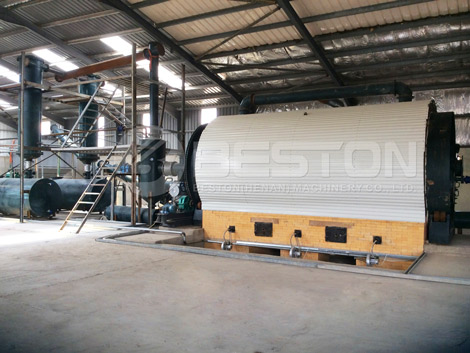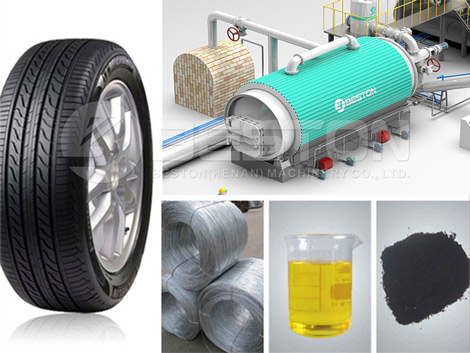There are various ways to handle waste materials and for waste like tires, recycling proves to be the best option. Waste tires are managed through recycling because they are non-biodegradable and pose environmental threats. Business people have invested in the construction of waste tyre pyrolysis plant to manage the disposal of waste tires. Tire recycling relates to resource management and thus taking an interest in the business would earn you some decent income. The tire recycling business is especially promising due to its high demand but less supply.

Waste Tyre Pyrolysis Plant
Stages involved in tire recycling plant technology Pyrolysis is the advanced technology that is applied in tire recycling. The technology is designed to diminish the effects caused by pollution brought by the disintegration of waste tires. Below are the outlined steps involved in the process.
1.To initiate the process, whole tires are put in a shredder machine for cutting into small pieces.
2.The steel wires incorporated inside the tire are pulled out and the tires sectioned into bulks. This step is only applied to tires with a diameter larger than 1200mm. A more comprehensive shredder is then used to further cut into tiny pieces. For tires with a diameter less than 1200mm, small pieces ranging between 2- and 5cm are cut.3.The pieces are then fed into a pyrolysis reactor through a sealed screw conveyor. Fuels such as diesel, LPG and natural gas produced are fired in the burning room.
4.The hot air that is developed flows into the reactor for heating. The oil gas is then generated once the reactor’s inner temperature reaches the optimum degrees. The generated oil gas is directed to a manifold where heavy particles are liquefied into heavy liquid oil and drops in the heavy oil tank. The lighter oil gas rises up. A damping tank works to slow down the oil gas to allow for uniform settling into condensers. Get pyrolysis plant cost here.
5.The horizontally positioned tubular condensers then permit the liquefaction of the oil gas into fuel oil. The pyrolysis plant produces a large scale of oil gas set for liquefaction and storage into oil tanks. The combustible gas is desulfurated and cleansed in a hydro seal, after which it is recycled to the burning room for heat production. This saves a lot of costs used for tire pyrolysis.
6.In an exchange heat system, an inner pipe creates a passage for hot smokes from the reactor whereas oxygen enters through an out pipe. In the process, the air is heated by hot smoke then transmitted to the burning room for oxygen provision.
7.The smoke is cooled down in a flue condenser then goes into an impurities removal system. In a spraying tower, the smoke goes through water spray, water washing, activated carbon adsorption, and ceramic ring adsorption. After passing through four series of filters the smoke is considered clean.
8.The carbon black and steel wire are released out by an auto screw discharger. Through magnetism, the steel wire and carbon are separated and transported into storage tanks.
Application of tire recycling plant end- and by-products
•Fuel oil
Fuel oil is the main product derived from recycled tires in a plant and constitutes about 45% of the finished products. Fuel oil can be sold for commercial and industrial purposes. The oil can further be reprocessed by the oil distillation plant into diesel and gasoline.
•Carbon black
Carbon black, depending on the type of tires, usually constitutes 35% of the final products. Through industrial heating, it can be compressed into balls. The value of these forms measures that of coal. It can also be reprocessed into activated carbon. Briquettes can also be developed from carbon black. Find more Beston products here.

Tire to Oil Machine
•Combustible gas
The generated combustible gas from pyrolysis is used for heating the pyrolysis furnace. This allows for saving on fuel costs and investing more on the waste tire recycling plant.
•Tyre Derived Fuel
The tire-derived fuel is used for equestrian, which is a mixture of rubber and sand or an equivalent, such as sawdust. This mixture is used for horses’ ground construction in stables or at the tracks.
•Rubber granulates
Rubber granulates are re-used in artificial turfs, rubber mats, sports fields and also molded into products.
•Rubber powder
Rubber powder can be mixed with asphalt concrete for the construction of a noise reducing pavement.
•Free rubber
Liberated rubber has a high affinity for combustion and hence its combination with other flammable materials can increase the burning value of the material. See tyre to oil plant here.